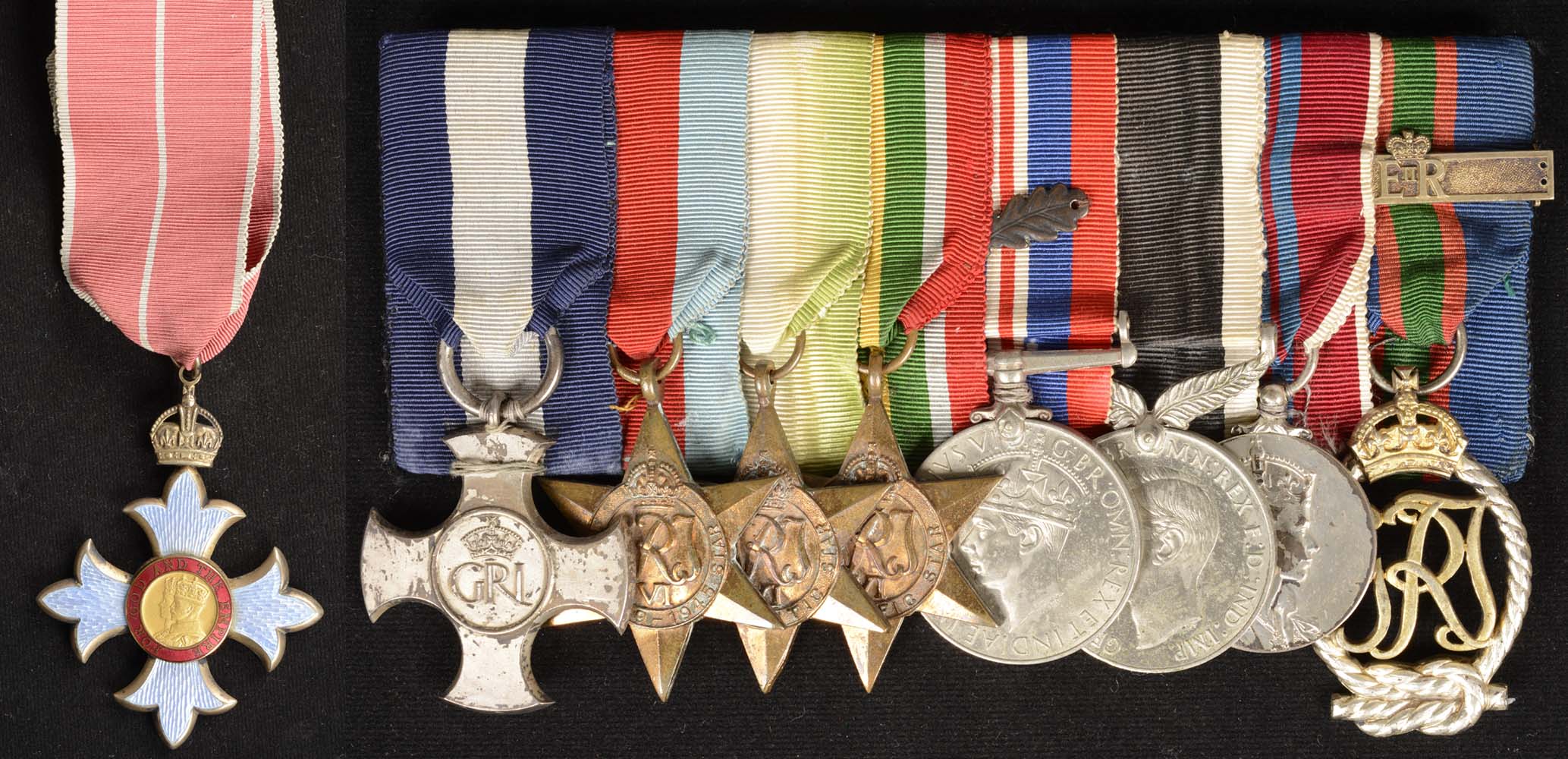

Display No. 14A
HILLIARD, John George Nicholson
John ‘Jack’ Hilliard was an officer in the Auckland Division of the Naval Volunteer Reserve and was working as a warehouse manager in Auckland, when he was mobilised for active service during the Second World War. Along with a group of other New Zealand reserve officers he was sent to the United Kingdom for further training and service in the Royal Navy. He commanded HMS Blackthorn, a Bay-class minesweeper. While serving in the Royal Navy in 1941 he was Mentioned in Despatches (MiD). In 1942 he was awarded the Distinguished Service Cross (DSC) for outstanding zeal, patience, cheerfulness, and for never failing to set an example of wholehearted devotion to duty. In addition to service in the Atlantic, Jack served in the Pacific during the war, and was awarded the Royal Naval Volunteer Reserve Decoration (VRD) in 1944. After the war he was active in the Royal New Zealand Naval Volunteer reserve division in Auckland, HMNZS Ngapona, commanding it until his retirement in 1958. He was created a Commander of the Most Excellent Order of the British Empire (CBE) and also served as an Aide de Camp to several governor generals of New Zealand, including Lord Freyberg.
Awarded medal(s)
Medal Description [Left to Right]:
Commander of the Most Excellent Order of the British Empire (CBE)
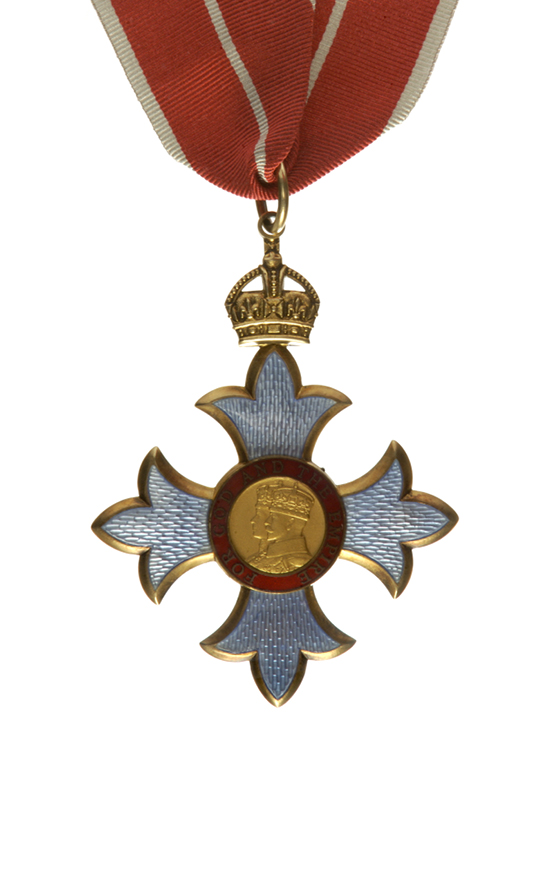
Established by King George V in 1917 for services to the British Empire. The Order has five classes: Knight and Dame Grand Cross (GBE), Knight Commander and Dame Commander (KBE / DBE), Commander (CBE), Officer (OBE) and Member (MBE). The KBE, DBE and CBE badge is silver-gilt with the arms enamelled pearl-grey and a crimson enamelled circle. In December 1918, the Order was split into two divisions: a Civil Division for civilian recipients; and a Military Division for awards to commissioned officers and warrant officers for distinguished service in action. The insignia of the Civil and Military Divisions is distinguished only by the ribbon, the military award having a narrow central stripe. Prior to the introduction of the New Zealand Order of Merit in 1996, the Order of the British Empire was the most common honour awarded to New Zealand military personnel.
The Distinguished Service Cross (DSC)
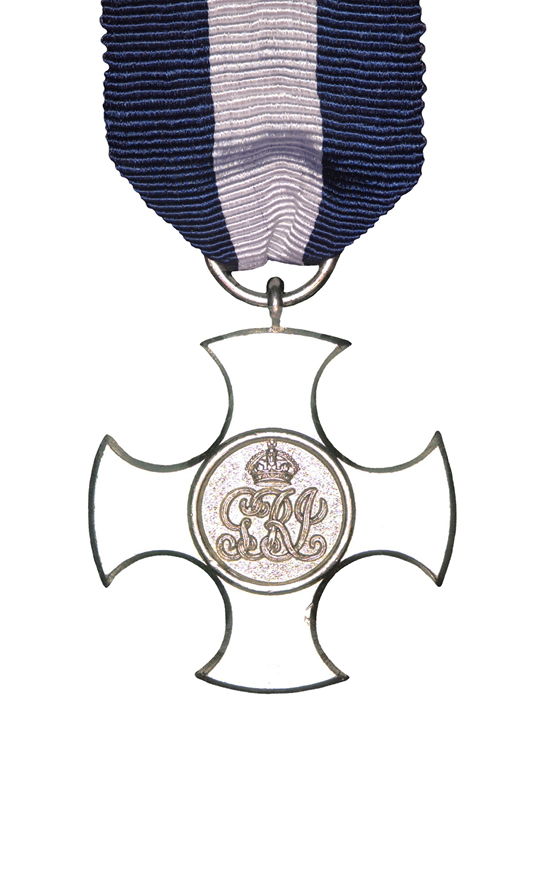
Instituted in 1901, as the Conspicuous Service Cross, this award was renamed the Distinguished Service Cross (DSC) in 1914. It was awarded to junior naval officers and senior naval ratings for courage and devotion to duty on active service. Eligibility was later extended to officers of the Merchant Navy and to Army and Air Force officers serving in HM Ships. Many New Zealand naval officers were awarded the DSC for their actions during the Second World War. Since 1993 the DSC has been made available to all ranks in the United Kingdom. The ribbon has three equal stripes of dark blue, white and dark blue. Bars are awarded for subsequent courageous acts.
The 1939-1945 Star
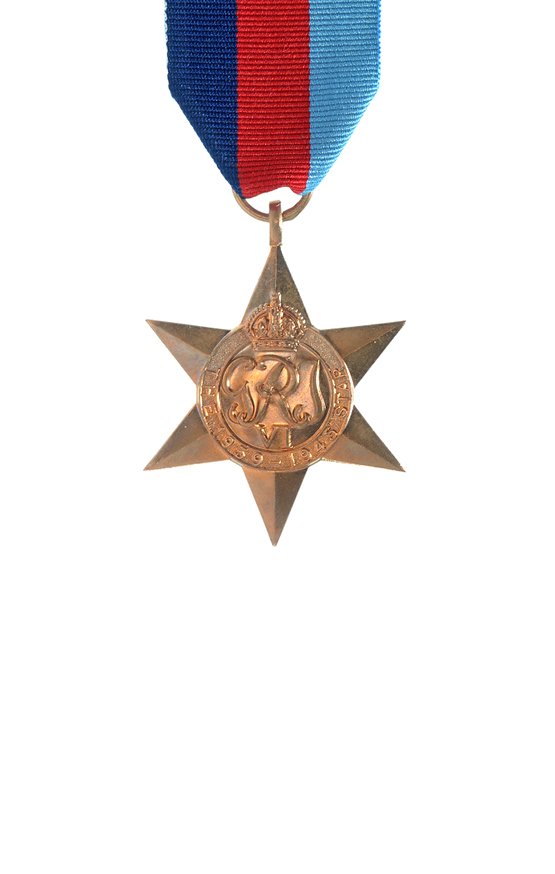
The 1939-45 Star is the first in a series of eight campaign stars instituted in 1945 to recognise service in World War Two. The ribbon has three equal vertical stripes of dark blue, red and light blue. The dark blue stripe symbolises the service of the Navy and the Merchant Navy, the red stripe symbolises the service of the Army, and the light blue stripe symbolises the service of the Air Force. The equal width bands represent the equal contributions of the three service arms towards victory. The ribbon was devised by King George VI. Two clasps could be awarded with this medal: ‘Battle of Britain’ and ‘Bomber Command’. Only aircrew would qualify for these clasps although a small number of Fleet Air Arm naval pilots flew for the air force and would be eligible for the ‘Battle of Britain’ clasp.
The Atlantic Star
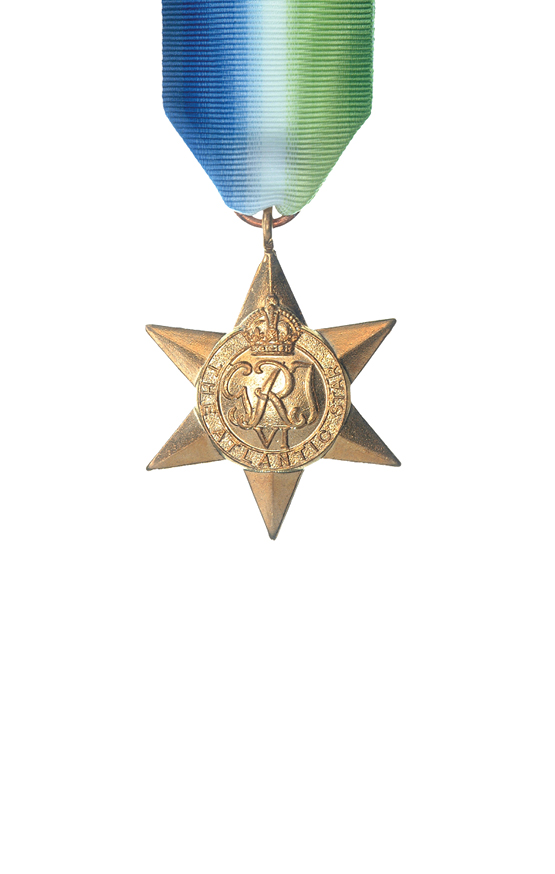
The Atlantic Star was awarded for service during the Second World War. It was instituted to commemorate the Battle of the Atlantic the longest continuous military campaign in the Second World War running from 3 September, 1939 – 8 May, 1945. Six months naval service or four months air service in the Atlantic, United Kingdom (‘home’) waters or North Russian waters was normally required. The ribbon is watered silk coloured blue, white and green, symbolising service in the oceans. Two clasps could be awarded with this medal: ‘France and Germany’ and ‘Air Crew Europe’. Personnel issued the Atlantic Star who then qualified for either the France and Germany and the Air Crew Europe Stars were awarded a clasp in respect of the second only (as only one clasp could be worn on the star).
The Pacific Star
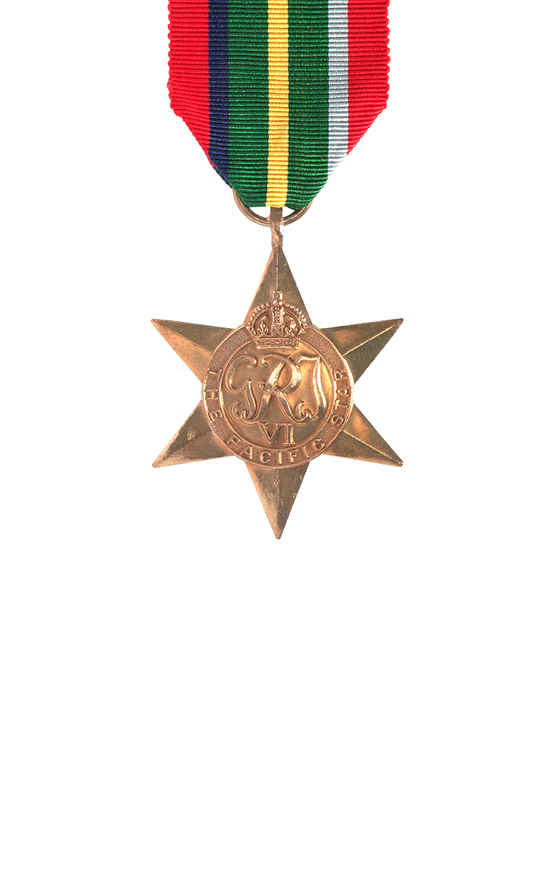
The Pacific Star was awarded in the Second World War for operational service in the Pacific between 8 December 1941 and 2 September 1945. This medal was also awarded for certain specified service in China, Hong Kong, Malaya and Sumatra: between 8 December 1941 and 25 December 1941 (for Hong Kong); between 8 December 1941 and 15 February 1942 (for China and Malaya); and between 8 December 1941 and 23 March 1942 (for Sumatra). The centre of the ribbon is dark green (symbolising the jungle) with a central yellow stripe (symbolising the beaches). On the outer edges are wide stripes of red (representing the Army), with narrow stripes of dark blue and light blue (representing the Navy and Air Force) between the stripes of dark green and red. A ‘Burma’ clasp could be awarded with this medal. Personnel qualifying for both the Pacific and Burma Stars were awarded the first star but only a clasp in respect of the second.
The War Medal 1939-1945
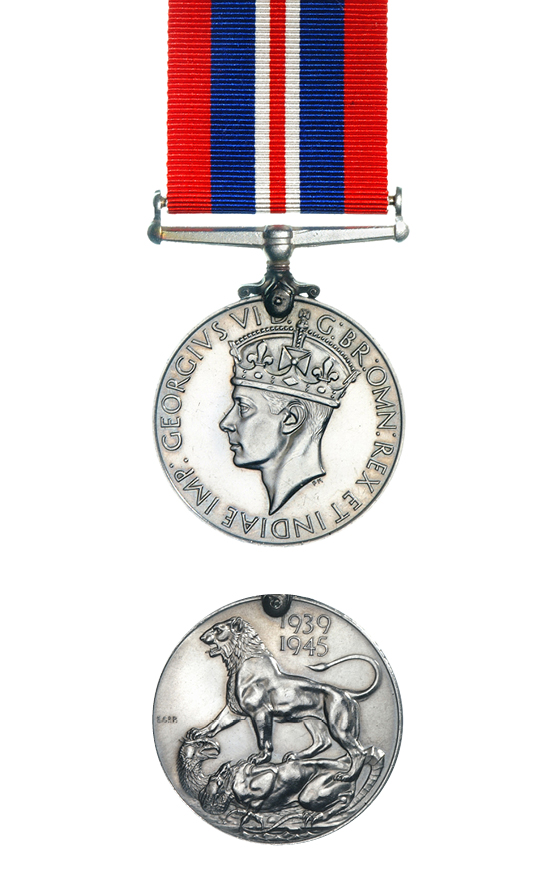
The War Medal 1939-45 was awarded across the British Commonwealth to all full-time members of the Armed Forces in the Second World War for 28 days service between 3 September 1939 and 2 September 1945, irrespective of where they were serving. The ribbon is the red, white, and blue of the (British) Union Flag. There is a narrow central red stripe with a narrow white stripe on either side. There are broad red stripes at either edge, the two intervening stripes being blue.
A bronze oak leaf on the medal ribbon denotes that the recipient was Mentioned in Despatches. To be Mentioned in Despatches a member of the armed forces had their name mentioned in an official report, written by a superior officer, and sent to a higher command. The report would describe the individual’s gallant or meritorious action in the face of the enemy.
The New Zealand War Service Medal
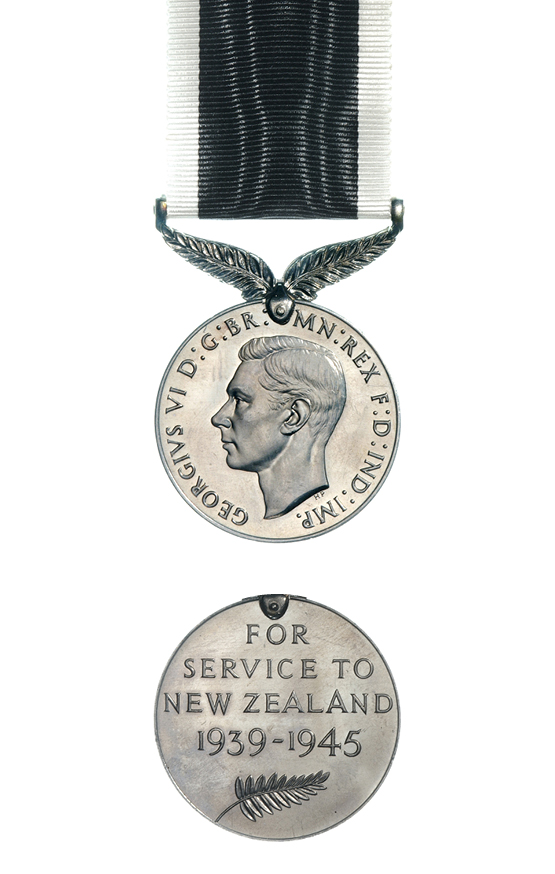
The New Zealand War Service Medal was awarded for 28 days’ full time service or six months’ part time service in the Second World War in any of the New Zealand Armed Forces including the Reserves, Naval Auxiliary Patrol Service, or Home Guard, between 3 September 1939 and 2 September 1945.
Coronation Medal 1953

This medal was issued to celebrate the coronation of Queen Elizabeth II in 1953. It was awarded to citizens of the British Commonwealth both military and civilian. Only 37 medals were issued with the names of the recipients engraved on them. These were awarded to the members of the British expedition which had reached the summit of Mount Everest on the morning of the Coronation ceremony. New Zealander, Sir Edmund Hillary, one of the two climbers who conquered the mountain, was knighted and received the Coronation Medal from the new Queen at Buckingham Palace several weeks later.
Royal Naval Volunteer Reserve Decoration
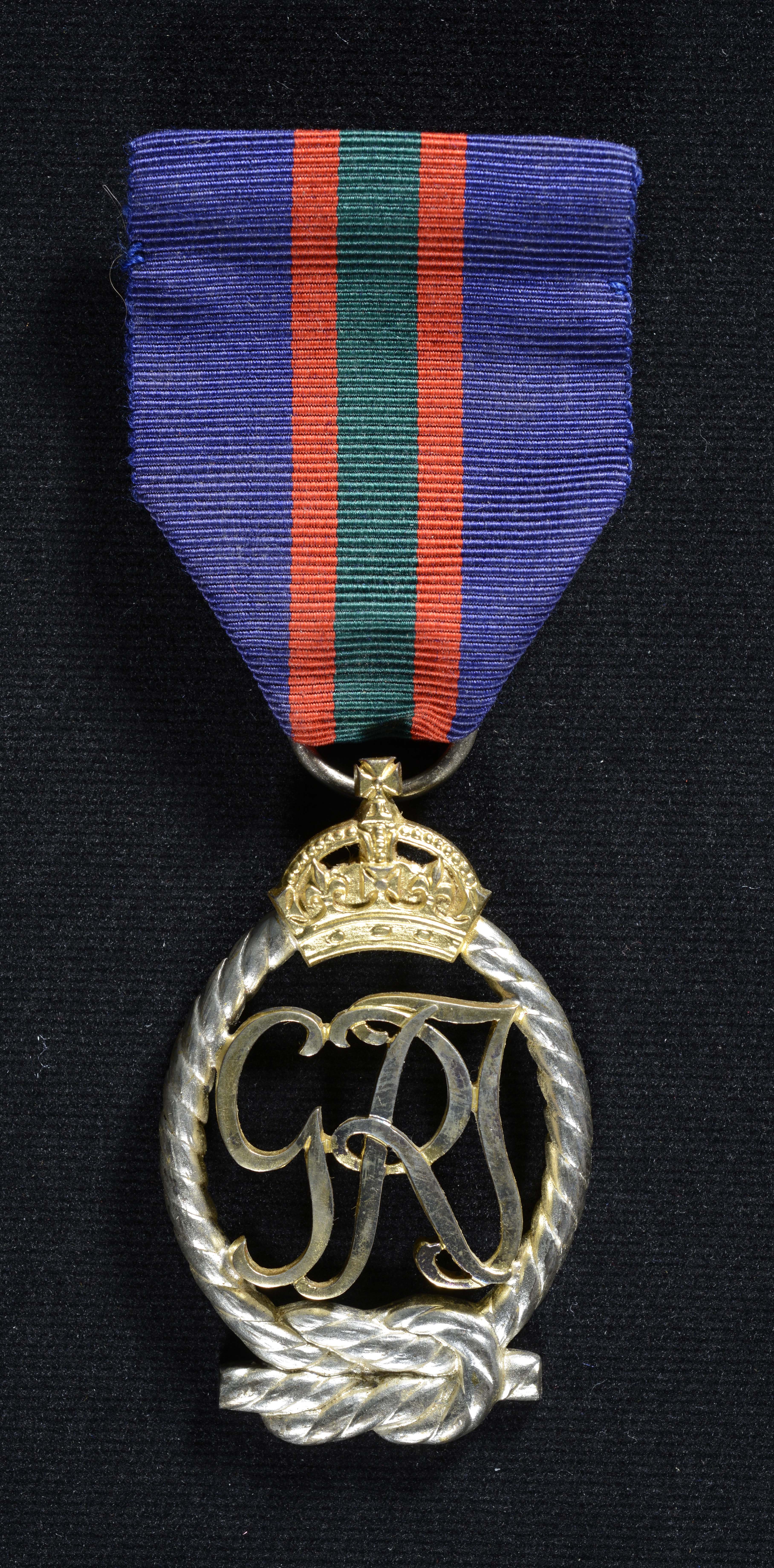
Instituted in 1908, the Royal Naval Volunteer Reserve Decoration was awarded to commissioned officers in the Royal Naval Volunteer Reserve after fifteen years of service; wartime service counting as double. Holders were entitled to the postnominal letters VD (until 1947) or VRD (after 1947). The original plain dark green ribbon was replaced with a blue, green and red striped version in 1919. The VRD was discontinued in the United Kingdom in 1966 but continued to be awarded in New Zealand, being instituted in 1985 as the Royal New Zealand Naval Volunteer Reserve Decoration with qualifying service backdated to 1977. The New Zealand VRD is the exact same design as the RNVR Decoration with the post 1919 striped ribbon. The ribbon colours are symbolic with blue representing the sea, red the Royal crimson and green which was the colour of the ribbon of the original Volunteer Officer’s decoration.

